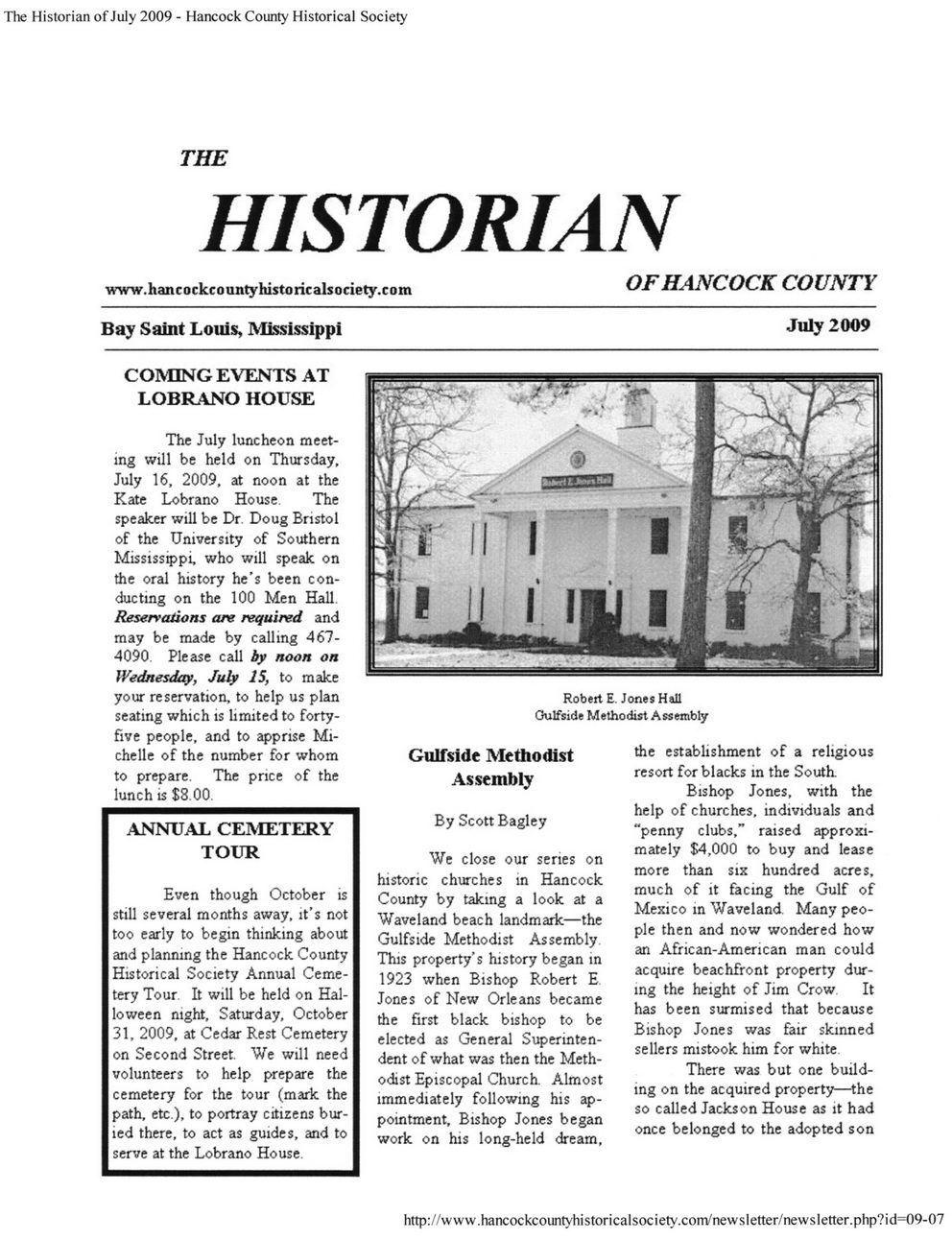This text was obtained via automated optical character recognition.
It has not been edited and may therefore contain several errors.
The Historian of July 2009 - Hancock County Historical Society THE HISTORIAN www.hancockcoantyhistoricalsociety.com OF HANCOCK COUNTY Bay Saint Louis, Mississippi July 2009 COMING EVENTS AT LOBRANO HOUSE The July luncheon meeting will be held on Thursday, July 16, 2009, at noon at the Kate Lobrano House The speaker will be Dr. Doug Bristol of the University of Southern Mississippi, who will speak on the oral history he?s been conducting on the 100 Men Hall. Reservations are required and may be made by calling 467-4090 Please call by noon on Wednesday, July IS, to make your reservation, to help us plan seating which is limited to forty-five people, and to apprise Michelle of the number for whom to prepare. The price of the lunch is $8.00. ANNUAL CEMETERY TOUR Even though October is still several months away, it?s not too early to begin thinking about and planning the Hancock County Historical Society Annual Cemetery Tour. It will be held on Halloween night, Saturday, October 31, 2009, at Cedar Rest Cemetery on Second Street. We will need volunteers to help prepare the cemetery for the tour (mark the path, etc.), to portray citizens buried there, to act as guides, and to serve at the Lobrano House. Robert E. Jones Hall Gulfside Methodist Assembly Gulfside Methodist Assembly By Scott Bagley We close our series on historic churches in Hancock County by taking a look at a Waveland beach landmark?the Gulfside Methodist Assembly This property?s history began in 1923 when Bishop Robert E Jones of New Orleans became the first black bishop to be elected as General Superintendent of what was then the Methodist Episcopal Church. Almost immediately following his appointment, Bishop Jones began work on his long-held dream, the establishment of a religious resort for blacks in the South. Bishop Jones, with the help of churches, individuals and ?penny clubs,? raised approximately $4,000 to buy and lease more than six hundred acres, much of it facing the Gulf of Mexico in Waveland. Many people then and now wondered how an African-American man could acquire beachfront property during the height of Jim Crow. It has been surmised that because Bishop Jones was fair skinned sellers mistook him for white There was but one building on the acquired property?the so called Jackson House as it had once belonged to the adopted son http://www.hancockcountyhistoricalsociety.com/newsletter/newsletter.php?id=09-07

Jones, Valena C Article-Historian-1